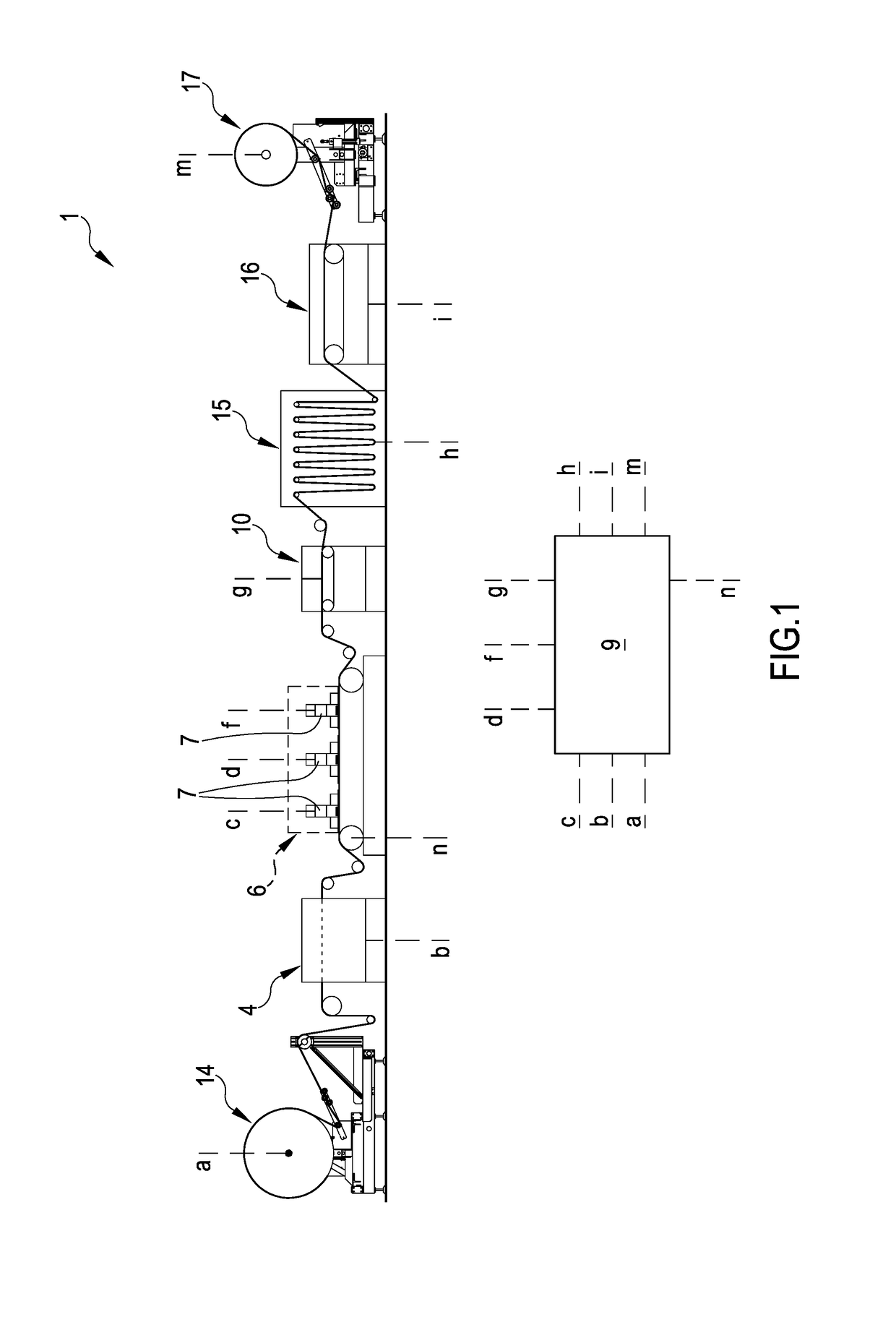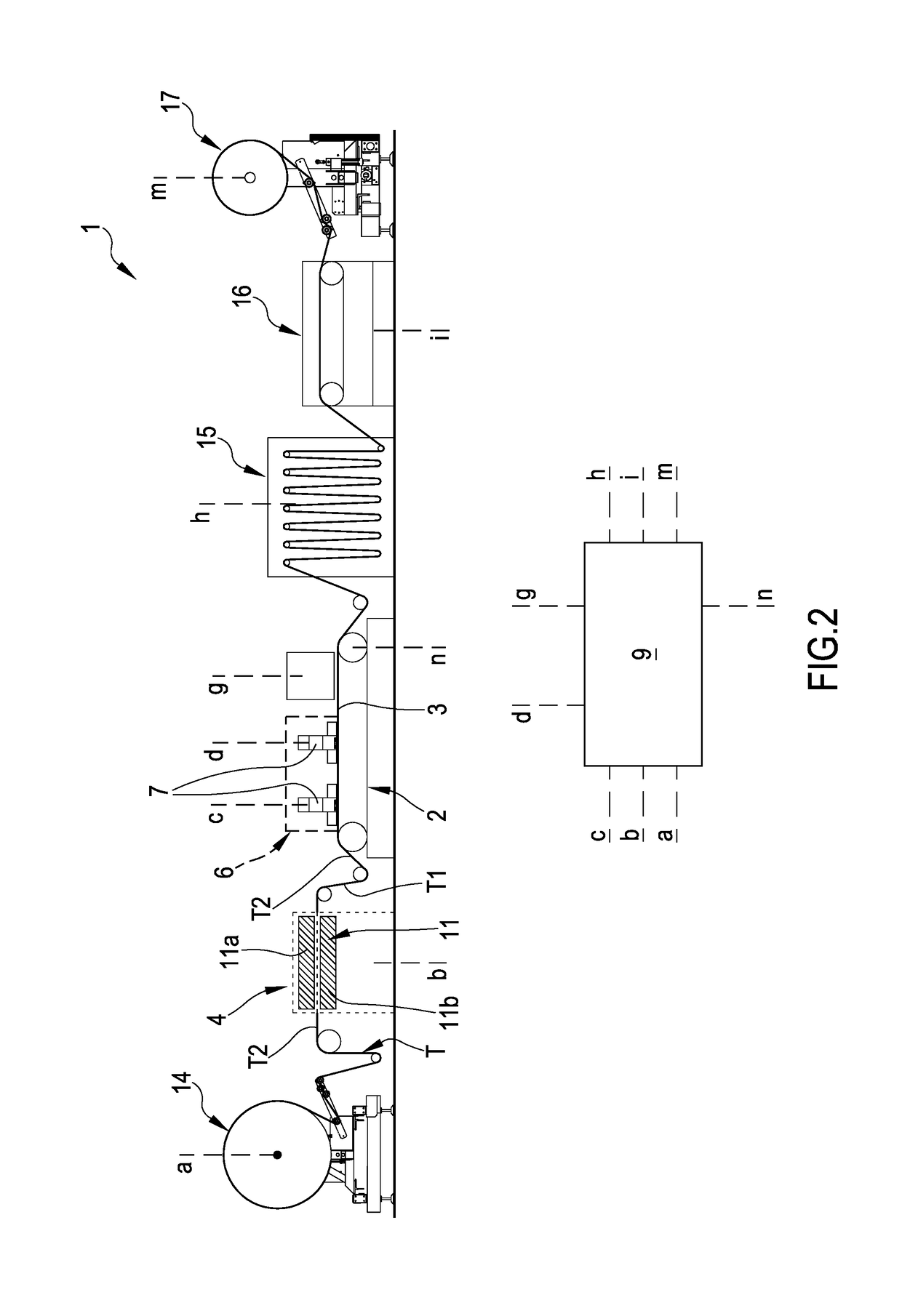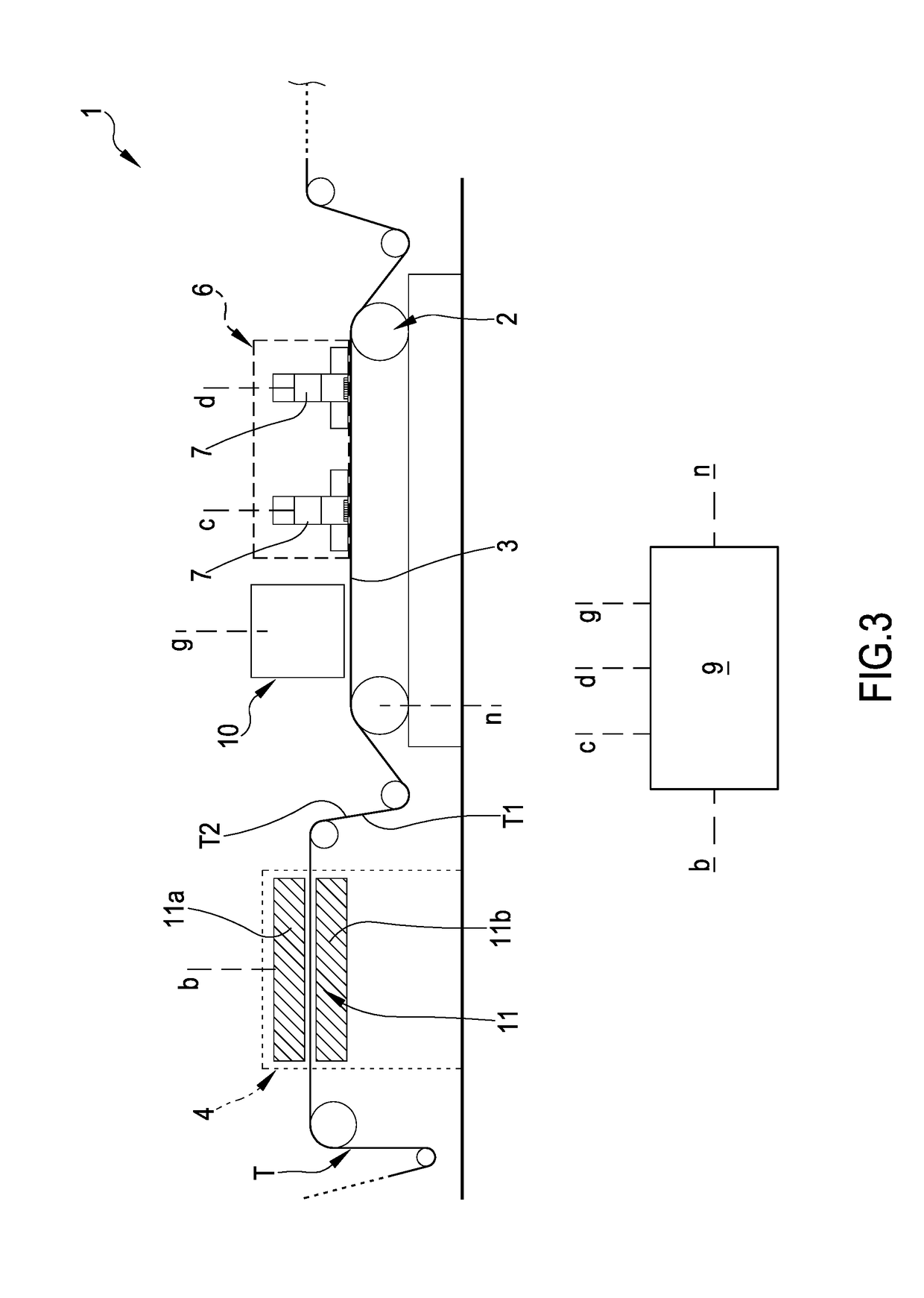Printing on fibrous material
a technology of fibrous material and printing machine, which is applied in the direction of typewriters, duplicating/marking methods, and textiles and paper, etc., can solve the problems of increasing the cost, material to be printed wet, and difficult to manage chemical-physical characteristics, so as to minimize the treatment time of sheet fibrous material and quick treat the material. the effect of the material and reasonable operating cos
- Summary
- Abstract
- Description
- Claims
- Application Information
AI Technical Summary
Benefits of technology
Problems solved by technology
Method used
Image
Examples
first embodiment
[0469]In a first embodiment, the preparing station 4 is configured for placing on the sheet fibrous material T a predetermined quantity of the treatment composition M comprising at least one of: a treatment liquid and treatment foam. As illustrated in FIG. 1, the preparing station 4 can be placed upstream the conveyor belt 2 so that the sheet fibrous material T is treated—by the treatment composition M—before the sheet fibrous material T itself comes in contact with the conveyor belt 2 (before the operative tract 3). FIG. 4 illustrates a further variant of the preparing station 4 wherein the same is placed at the conveyor belt 2: in this latter configuration, the preparing station 4 is configured for placing on the sheet fibrous material T, placed on the operative tract 3, the treatment composition M.
[0470]As hereinbefore described, in an embodiment of the invention, the conveyor belt 2 defines an operative condition wherein the same continuously moves the sheet fibrous material T c...
second embodiment
[0508]As hereinbefore described, in an embodiment of the invention, the conveyor belt 2 defines an operative condition wherein the same continuously moves the sheet fibrous material T constantly at a speed greater than 0; the preparing station 4 (in the second embodiment thereof) is configured for modifying the hydrophobicity of the fibrous material T, during the predetermined operative condition. More particularly, the preparing station 4 and printing station 6 are placed immediately consecutive to each other along the advancement direction A of the sheet fibrous material T; the conveyor belt 2, during the operative condition, is configured for continuously moving the sheet fibrous material T through the preparing station 4 and printing station 6. Particularly, between the preparing station 4 and printing station 6, it is not present a drying station.
[0509]The preparing station 4 (according to the described embodiment) comprises at least one plasma-treating device 11 configured for...
PUM
| Property | Measurement | Unit |
|---|---|---|
| speed | aaaaa | aaaaa |
| speed | aaaaa | aaaaa |
| constant speed | aaaaa | aaaaa |
Abstract
Description
Claims
Application Information
 Login to View More
Login to View More - R&D
- Intellectual Property
- Life Sciences
- Materials
- Tech Scout
- Unparalleled Data Quality
- Higher Quality Content
- 60% Fewer Hallucinations
Browse by: Latest US Patents, China's latest patents, Technical Efficacy Thesaurus, Application Domain, Technology Topic, Popular Technical Reports.
© 2025 PatSnap. All rights reserved.Legal|Privacy policy|Modern Slavery Act Transparency Statement|Sitemap|About US| Contact US: help@patsnap.com



